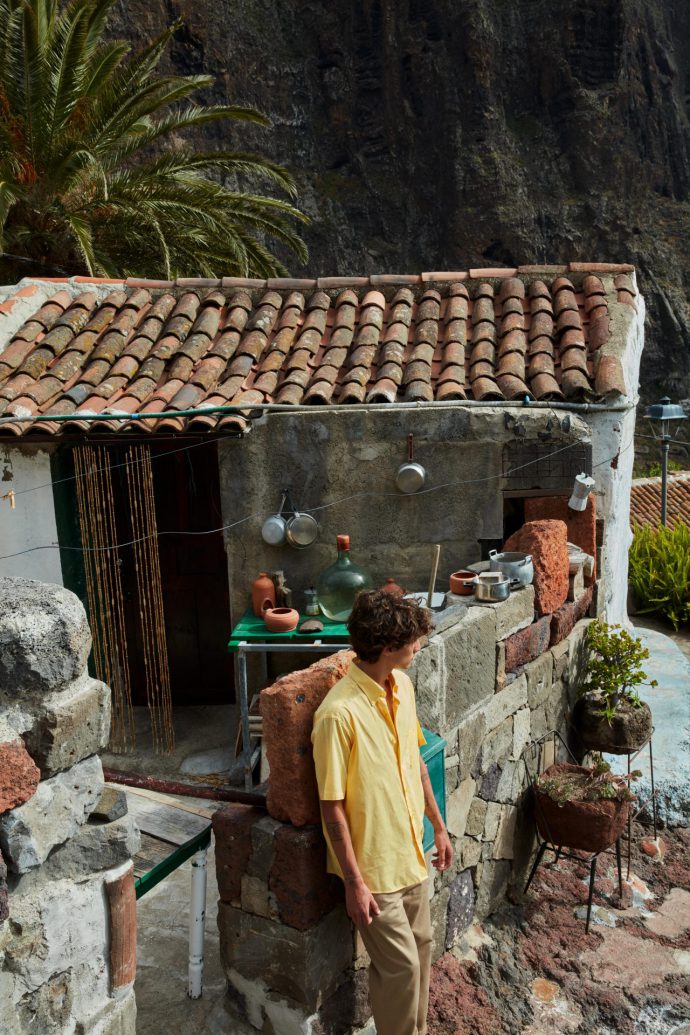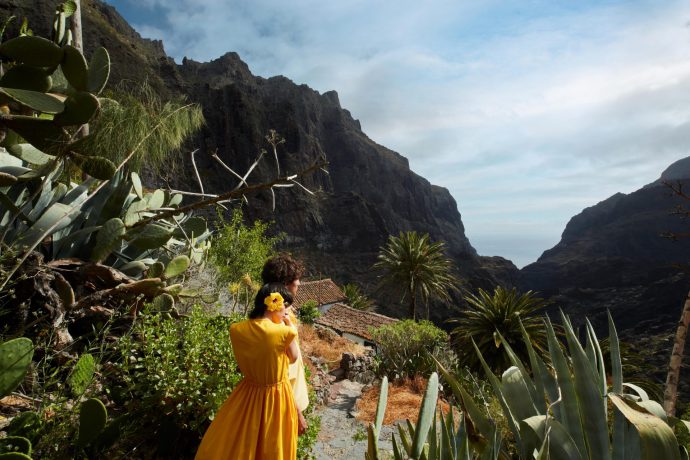Between the historic mountains of Teno winds the winding road towards a small village lost between large depressions, Masca. This asphalted road usually leaves no one indifferent, for the superb views that the landscape offers as you drive through mountains and ravines are breathtaking. The visit to the bucolic hamlet of Masca is preceded by a deafening silence.
Masca is located in the interior of the Teno Rural Park in the municipality of Buenavista del Norte, in the extreme northwest of the island, and is a historical site included in the list of Assets of Cultural Interest due to its heritage value. The houses of Masca are traditional constructions made of volcanic stone, wood from local trees, mud and cane. A place to look after and conserve.
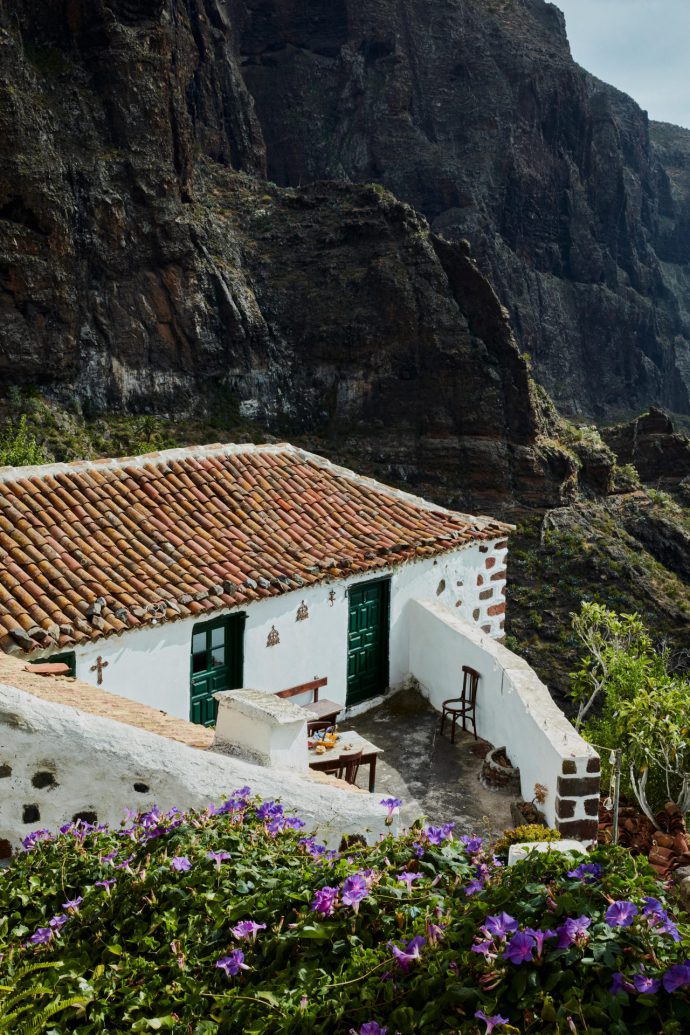
Its origins date back to the time of the Guanches, the ancient aborigines of Tenerife, who found a fantastic location in Masca. You will soon discover that Masca has so much beauty in such a small space that it is not surprising that it is one of the most visited spots in Tenerife. The view of part of the hamlet overlooking the El Medio mountain and the Morro de Catana as a backdrop is enchanting. It is the postcard of Masca.
Visiting the hamlet of Masca will not take you more than an hour. Go to the main square, with its enormous Indian laurel tree, and visit the chapel of Nuestra Señora de la Inmaculada Concepción, walk down the cobbled streets and sit down in one of the restaurants to enjoy the views. In Masca the clock is ticking.
Hiking in the Masca ravine
The descent of the Masca ravine is a hiking route of almost 10km in length (descent and ascent are necessary) that can be done in about 6 hours. It is a route with a high level of difficulty that can be organised with companies specialised in Active Tourism.
The path of the ravine winds through impressive volcanic walls that project towards the sky and whose grandiose reward is the beach of the same name, the beach of Masca, with which the ravine opens up to the sea in the middle of the imposing cliffs of Los Gigantes.
To explore the Masca ravine it is necessary to book in advance, as daily access is limited for conservation and safety reasons. Booking is done via the internet and a certain amount of physical preparation is recommended as it involves descending and ascending the ravine (about 10km in total). It is not possible to walk along the coast for the moment. Footwear, preferably hiking or mountain footwear, and suitable clothing, water and sufficient food are essential to enjoy this hiking route.
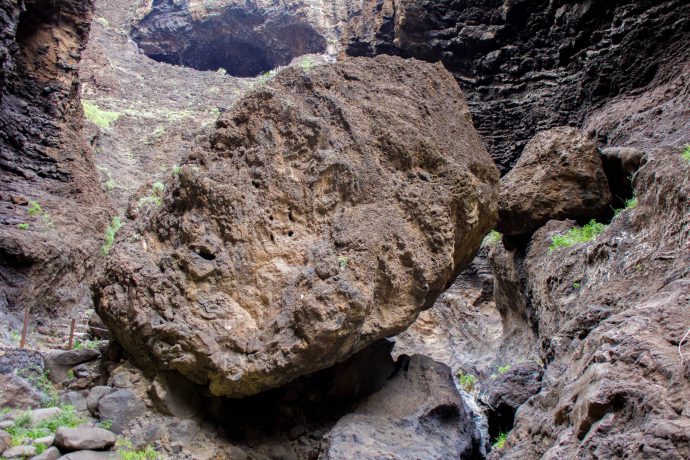
Once you have booked your place to access the ravine, the next thing to do is to organise your journey to Masca, as it is obligatory to do so by public transport (bus or taxi). The hamlet has a limited number of parking spaces. It is therefore forbidden to leave your car in the car park for more than 2 hours.
The historic centre of Santiago del Teide is the closest option for taking the bus or a taxi to Masca. Check the Masca ravine website for the bus timetables from Santiago del Teide to Masca so that the journey coincides with the time of access to the ravine. Once these preliminary formalities have been organised, the only thing left to do is to enjoy this magnificent place.
First stop, the Visitor Centre
The Masca Visitor Centre is located in the heart of the hamlet in an old stone house. It offers interesting general information about the Teno Rural Park, as well as about Masca and the hiking route through the ravine.
At the Visitor Centre office you can check your reservation for access to the ravine and pick up the compulsory helmet for the descent and ascent. Safety first.
Descent of the Masca ravine
The Masca ravine descent route runs through the interior of a deep canyon at the end of which you can see the sea, the immensity of the Atlantic. A place where it is fascinating to contemplate the laborious power exerted by the water to sculpt such a deep ravine.
The volcanic materials of the walls along the path are between 5 and 8 million years old. This is one of the oldest areas of Tenerife and the ravine represents the scars carved by millions of years of erosion.
Along the way the sound of water is a constant companion, as the ravine maintains a small stream for much of the year. Numerous crystal-clear pools of water can be found on the way to the coast.
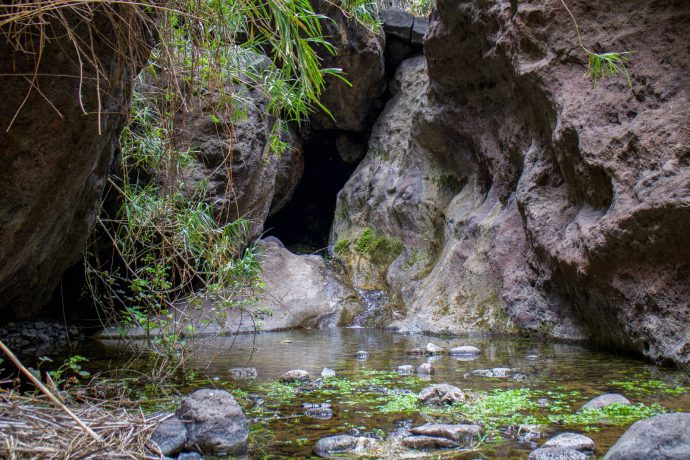
The diversity of volcanic materials, as well as a unique flora and fauna are the hallmarks of the Masca ravine. The willows that grow near fresh water, the numerous birds that take refuge in small natural caves, and countless invertebrates of great value stand out. These are just some of the small treasures of this ravine.
Along the way, it is also possible to observe traces of the ravine’s past uses, such as the old cultivation terraces, water channels and caves used as shelters by the goatherds. Masca exudes history from every corner.
On the final stretch of the path, the sound of the waves breaking on the shore envelops you. The beach of Masca appears as a final climax. On one side of the beach is the old jetty that used to connect the hamlet with the outside world. It is no longer operational, so it is not possible to take a boat or kayak from the ravine to Santiago del Teide. After a recommended rest on the coast of Masca, it is necessary to retrace your steps back to the farmhouse at an altitude of 750 metres. The views on the way back are just as impressive and allow you to enjoy for the second time a unique spot in the world, the Masca ravine.
